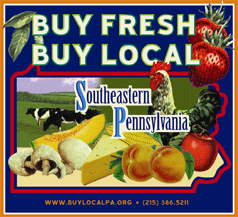I recently traveled to Savannah Georgia for a mini vacation. I’ve heard so many good things about this city so when I had the opportunity to go, I did. In addition to its history, beauty, and culinary highlights, the underlying motivation to visit this destination was… Paul Deen.
I know the internal praises are being sung – great personality, sweet southern accent, uses butter in everything, etc. I also know the external criticisms are flying – overrated, responsible for the obesity of American children, uses butter in everything, etc. Even though some (you choose) of those criticisms are absolutely correct, there are plenty of people who are in love with the “Queen of Southern Cuisine” from Savannah, and I’m one of them.
 |
| ...from Congress Street |
 |
| ...waiting room |
She began her culinary empire in this town and still lives on one of the exterior islands. Her renown “Lady and Sons” restaurant is located in a wonderfully quaint area of the city, but unfortunately it’s within this location where one of those criticisms in particular is applicable.
 |
| Leopold's - Fantastic B-day Cake Ice Cream! |
I had heard from friends and townies themselves that this place is overrated, so while I made sure to stop in to say I saw the place, I opted to dine at other less-famous and more locally known establishments. After all, I believe it’s in this type of eatery that you will find the best local cuisine any town has to offer (Vinnie Van Go Go's and Leopold's!). TV has its celebrity chefs, whom are great, but too often their flagship restaurants can’t support the hype.
 This principle was also manifested in the Paula Deen product line into which I bought. I purchased the Sweet Potato Biscuit mix from a local shop on the river as a way to commemorate my trip, and because I love sweet potato biscuits. However, once I got home I realized the error of my ways. This mix contained flour, sugar and baking powder. That’s it. Are you kidding me?
This principle was also manifested in the Paula Deen product line into which I bought. I purchased the Sweet Potato Biscuit mix from a local shop on the river as a way to commemorate my trip, and because I love sweet potato biscuits. However, once I got home I realized the error of my ways. This mix contained flour, sugar and baking powder. That’s it. Are you kidding me? I still had to try it as not to waste my investment in the queen’s empire, and I was even more disappointed with the finished product. I had made sweet potato biscuits before, from scratch, and the PD biscuits had a strange, metallic taste to them. Not pleasant. With the remainder of the ingredients (yogurt, mashed sweet potatoes) I bought to use with this mix, I promptly made another batch from scratch using my own organic whole wheat flour, organic turbinado sugar, and baking powder.
That’s more how I like it. These were delicious. The funny thing is - this recipe is part of the Deen empire as well. Paula’s sons, Jamie and Bobby, published this recipe that I found on Dr. Oz’s site. Let the family feud begin.























